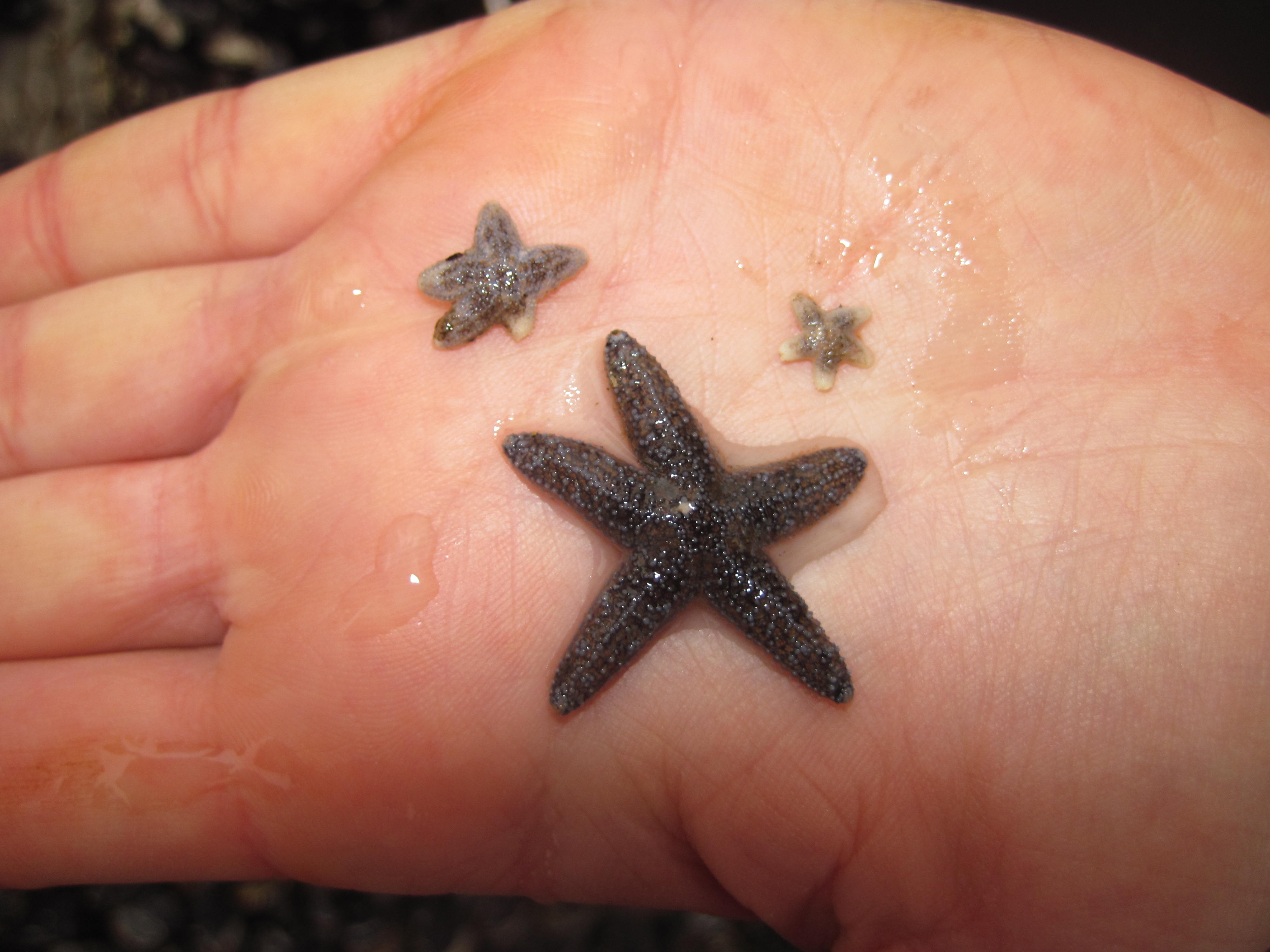
Scientists have identified the top suspect in the mysterious die-off of millions of sea stars along the west coast.
Millions of starfish from Mexico to Alaska have lost their legs and turned to mush, confounding and alarming scientists and beachgoers. In affected areas, the mortality rate has been as high as 70 to 99 percent. The phenomenon is known as “sea star wasting disease” but the cause has remained unknown.
Researchers from UC Santa Cruz, Cornell University and other institutions now have strong evidence that links the disease to a densovirus, a type of parvovirus commonly found in invertebrates. In a paper published in the Proceedings of the National Academy of Sciences, the scientists report that densovirus is also present in museum specimens of sea stars as far back as the 1940s. That means that while the virus has long been present in sea star populations, something has triggered the recent outbreak.
Mass sea star die-offs have occurred before, says Peter Raimondi, chair of the Department of Ecology and Evolutionary Biology at UC Santa Cruz. But they all corresponded with El Niño years that brought warmer waters to the Pacific Coast.
“The key difference with other outbreaks is that in other ones it was unambiguously associated with warm water,” Raimondi says.
This latest die-off doesn’t follow the same pattern. Previous outbreaks spread north as warm waters moved up the coast, but the current outbreak has occurred as a series of individual incidents, popping up all over the west coast, first in the north and then further south and then back in the north. Some of the affected areas saw warmer temperatures but some didn’t, Raimondi says. This outbreak has also lasted longer and affected a larger area than ever before.
